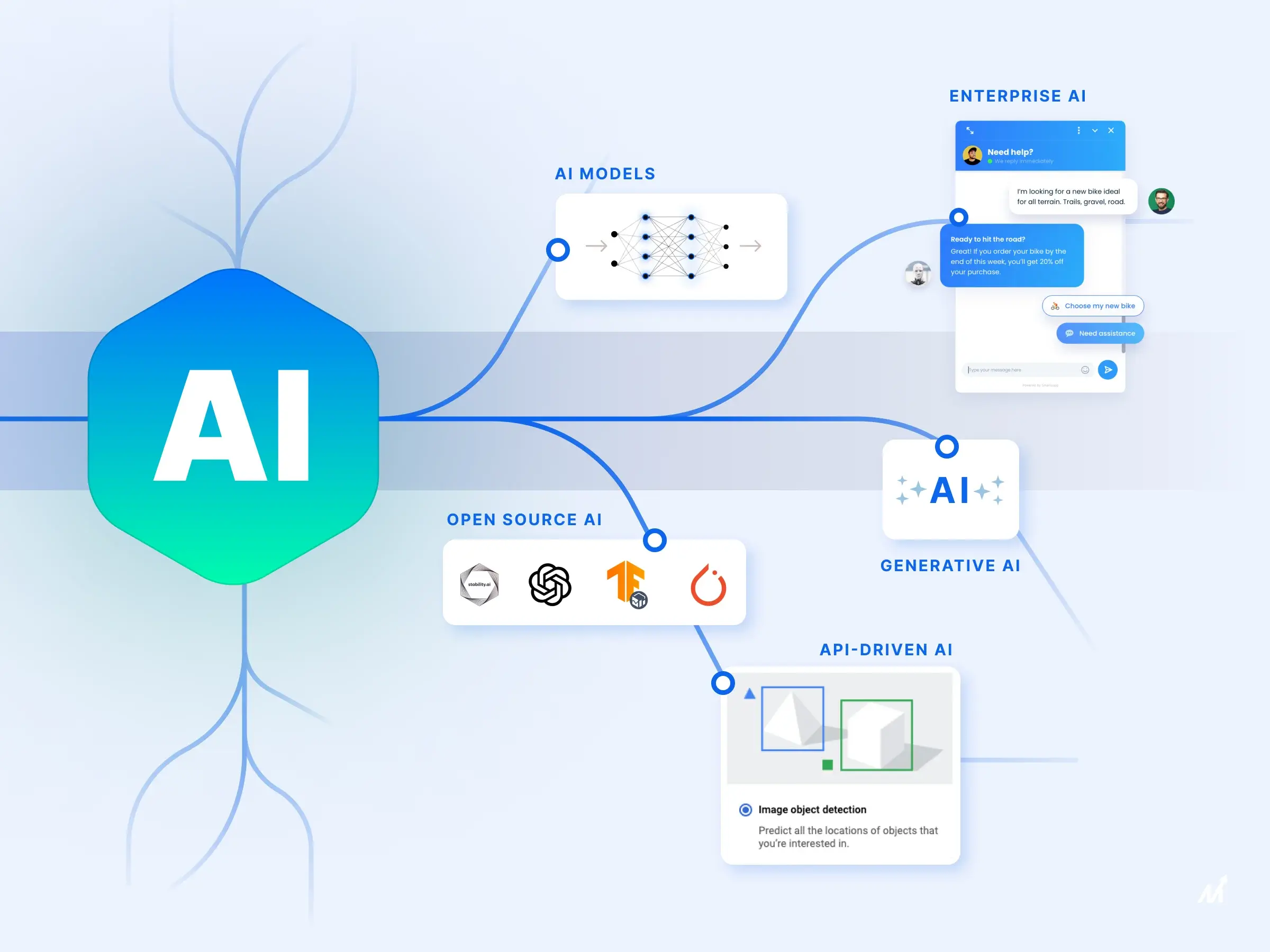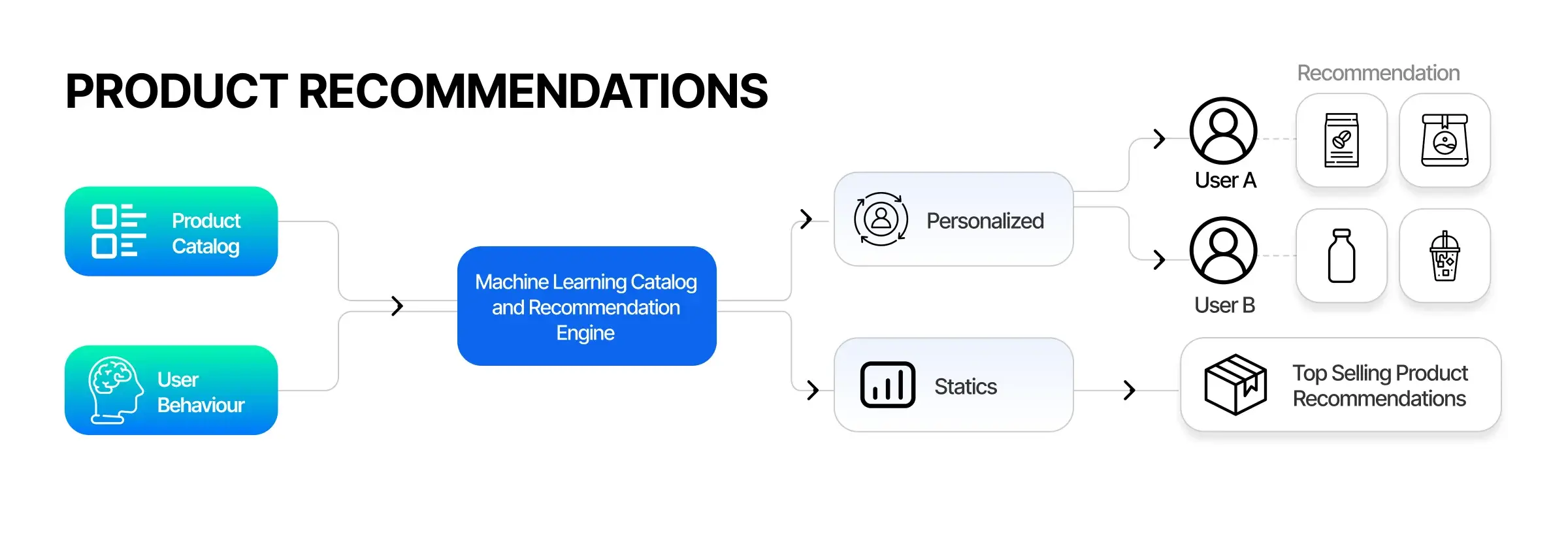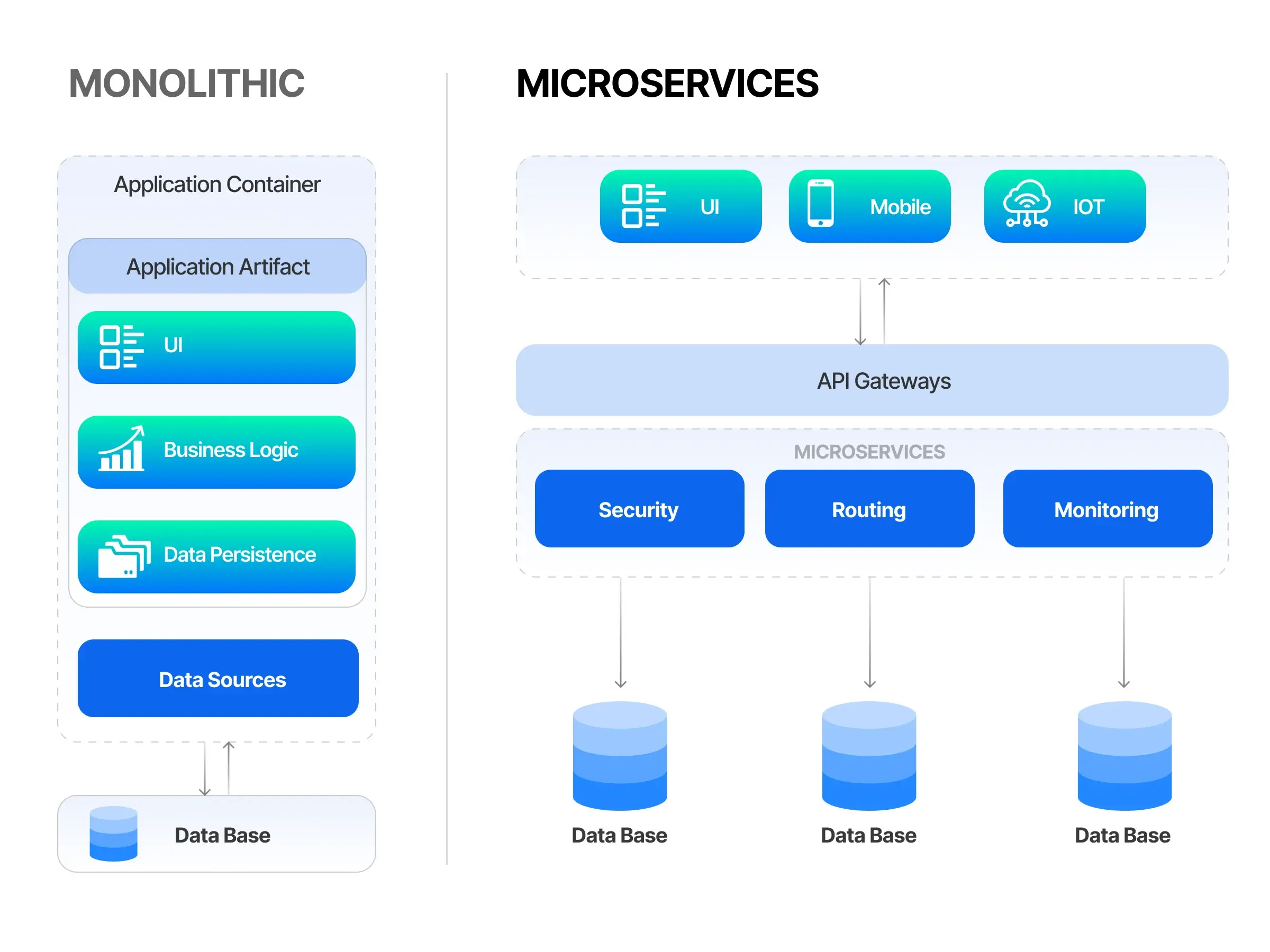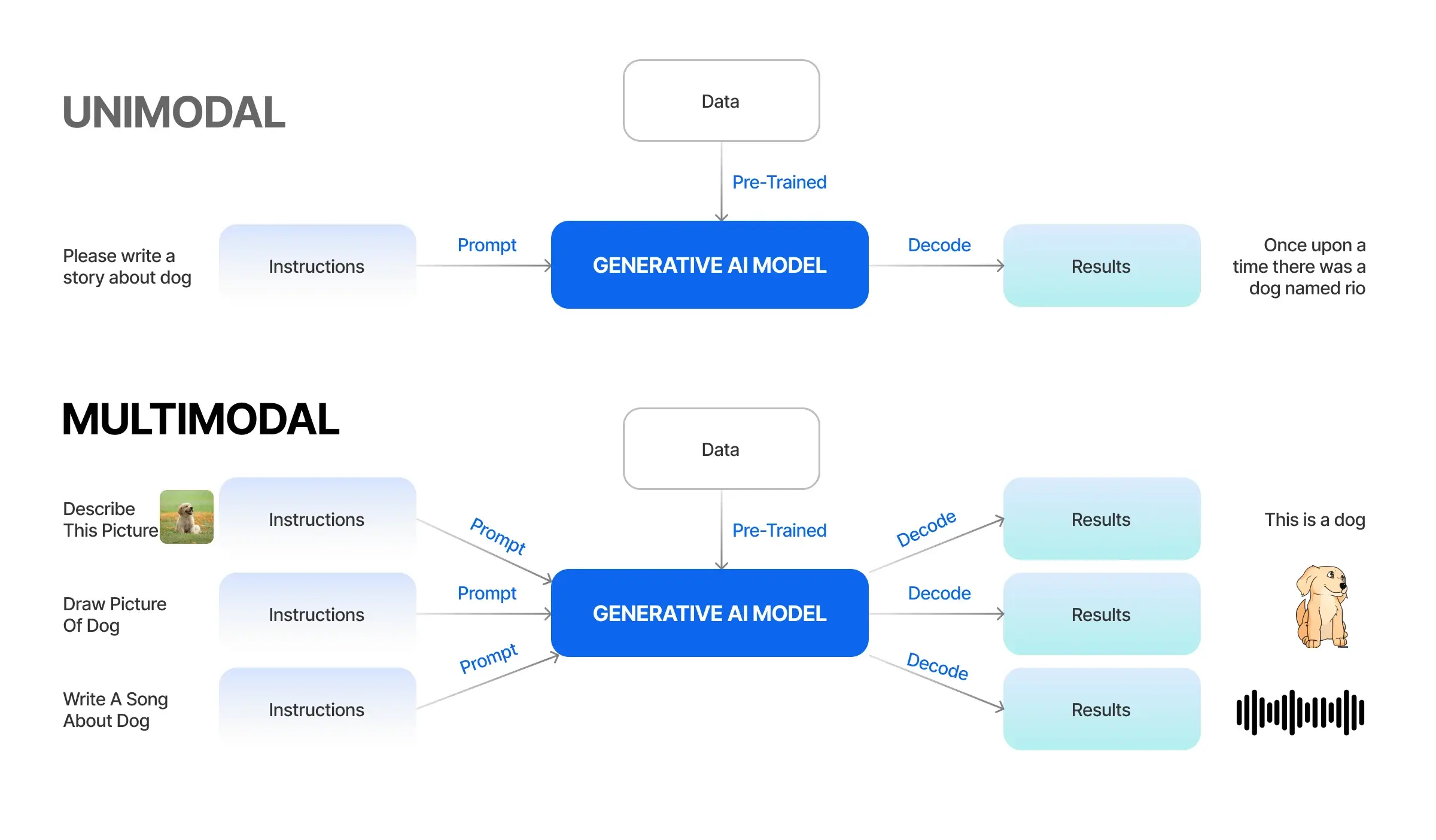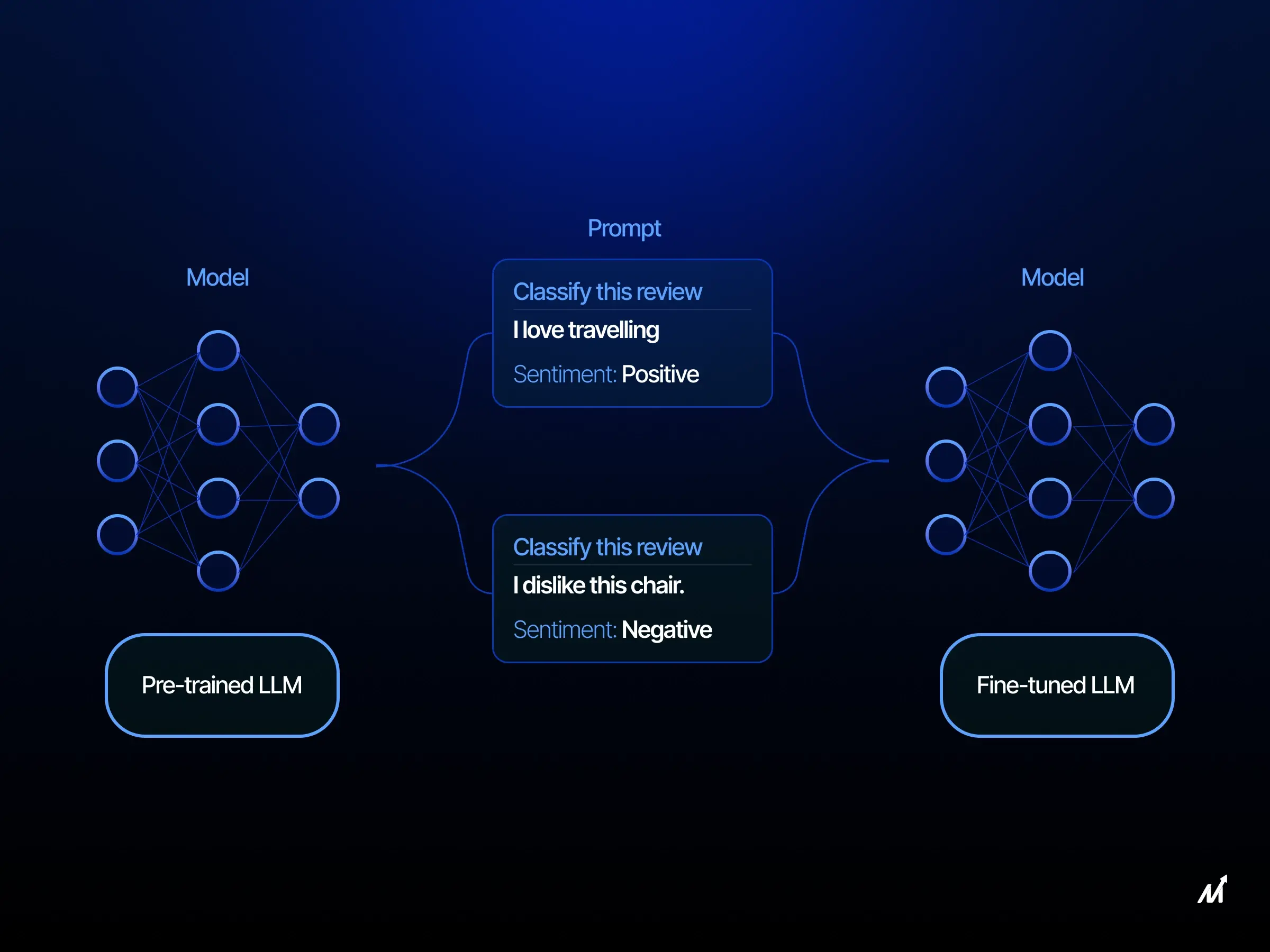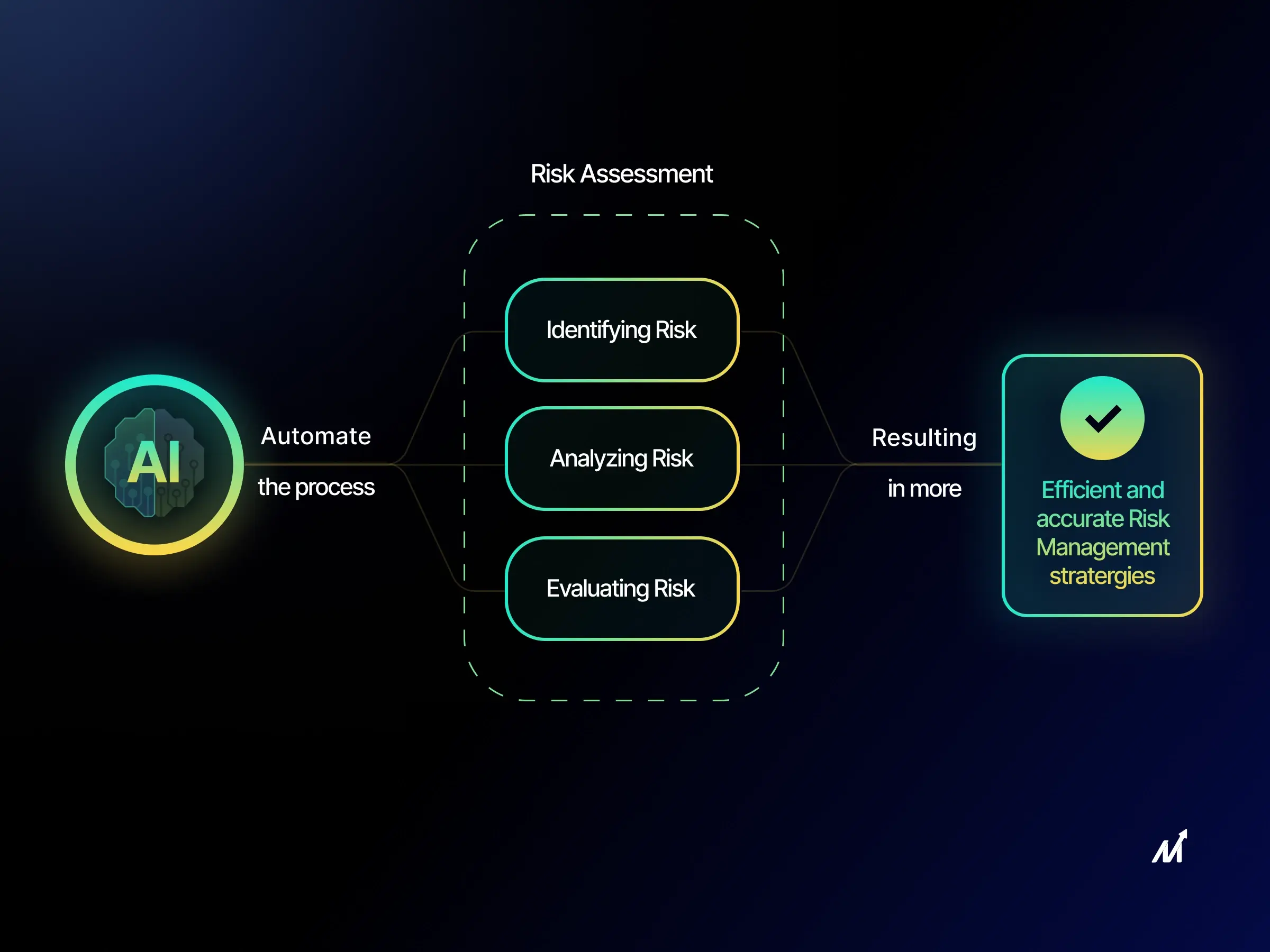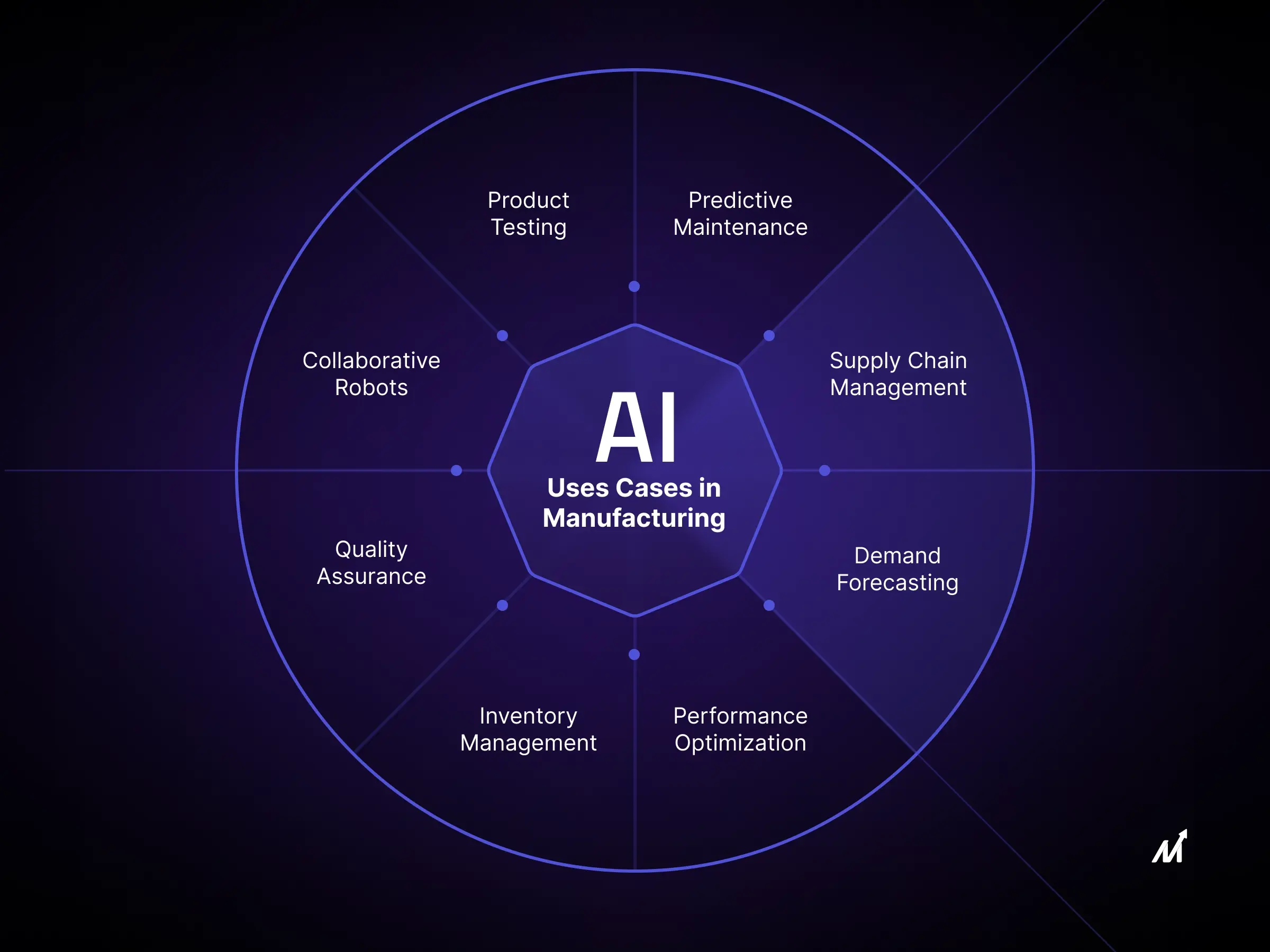AI Trends: Introduction
Welcome to 2024, where AI is getting a sleek new upgrade. Gone are the days of bulky, power-hungry models. Now, smart is small, and efficiency is everything. These pint-sized AI powerhouses fit into our hand-held devices and local servers. It is revolutionizing everything from your local clinic to the mom-and-pop shop around the corner. They’re nimble, they’re quick, and they’re here to make every byte of data count. Drawing on insights from our extensive work with customers, we’re eager to share emerging AI trends for 2024.
The initial excitement around early generative AI has transformed into real-world business benefits. It is capable of processing and creating text, voice, and video content. It is changing the way companies improve productivity, drive innovation, and unleash creativity. McKinsey & Company suggests that these Generative AI applications could contribute an astounding USD 2.6 to 4.4 trillion to the global economy each year, across various sectors.
This global experience illustrates how different industries are influencing and adapting to the changing tech landscape. Here’s a look at what the future may hold.
Top AI Trends to Watch Out in 2024
1. AI Models: Smaller, Smarter, More Efficient
2024 is witnessing a paradigm shift in artificial intelligence. The AI trend is moving away from large, resource-intensive models towards smaller, more efficient ones. These compact AI models are specially designed to operate in environments with limited computational power. The prime examples are edge computing systems or smaller business networks. The integration of these models with high-quality, structured data sources, such as Knowledge Graphs, is a significant step forward. This integration is aimed at reducing errors and improving the accuracy of AI outputs. For businesses, the emergence of user-friendly platforms offering AI integration tools is a game-changer. These platforms enable businesses to adopt AI solutions without needing deep technical expertise. This leads to a broader and more practical application of AI in various industries.
A practical example is the use of these models in healthcare monitoring devices. They can analyze patient data in real-time without needing to connect to large data centers. Another area where these models are gaining traction is in small businesses. They help in customer service and inventory management, providing efficient solutions without the overhead of large-scale AI systems. Integration with structured data sources, like Knowledge Graphs, further refines their accuracy. It enables more precise predictions in fields like market analysis and risk assessment.
2. Customized Enterprise AI Solutions
Customization in enterprise AI is revolutionizing how businesses interact with technology. Unlike off-the-shelf AI solutions, these custom systems are developed to align with the unique needs and data environments of each business. The process involves integrating proprietary data – customer behavior, market trends, and internal processes – into AI models. It ensures that the AI’s responses and actions are finely tuned to the company’s specific context.
For example, consider a multinational retail chain. Each geographical market it operates in has unique customer preferences and cultural nuances. By employing region-specific AI models, trained on local consumer behavior and preferences, the retail chain can offer a highly personalized shopping experience. In Japan, where efficiency and precision are highly valued, AI tools are designed to streamline the shopping experience, minimizing wait times and optimizing product recommendations. Conversely, in Brazil, where warmth in customer relations is crucial, AI is tailored to enhance engagement, focusing on interactive and friendly customer service.
The key to successful enterprise AI customization lies in its implementation. It begins with identifying the specific areas where AI can add value – be it customer service, inventory management, or market analysis. The next step involves data collection and model training, where AI learns from existing business data to understand patterns and behaviors specific to the business. Continuous learning and adaptation are crucial, as AI systems must evolve with changing market dynamics and consumer behaviors.
The impact of such customized AI is profound. Businesses can expect more efficient operations, improved customer satisfaction, and an edge in market competitiveness. AI, in this context, becomes not just a tool, but a strategic asset driving innovation and growth.
3. The Rise of Open Source AI Models
The year 2024 is witnessing a significant surge in the adoption of open-source AI models by businesses. This trend marks a shift from proprietary AI technologies to more accessible, community-driven solutions. Open-source AI models are pre-trained systems made available to the public, allowing businesses to utilize and modify them according to their specific needs.
One notable example is IBM’s collaboration with NASA, resulting in the creation of a geospatial AI foundation model. This model, available on the Hugging Face platform, is a groundbreaking contribution to the open-source AI landscape. It leverages NASA’s extensive earth science data, making it particularly valuable for applications in climate research and geospatial intelligence.
For businesses, the advantages of using open-source AI models are manifold. Firstly, it reduces the cost and time associated with developing AI systems from scratch. Companies can leverage these pre-trained models, customizing them with their data to meet specific business objectives. This approach accelerates AI adoption and innovation, allowing even small and medium-sized enterprises to harness the power of AI.
Moreover, open-source AI fosters a collaborative environment where businesses, researchers, and developers can share insights and improvements, collectively advancing the field of AI. This model of shared knowledge and resources is particularly beneficial for tackling global challenges, such as climate change, where the pooling of data and expertise can lead to more effective solutions.
However, leveraging open-source AI also requires a strategic approach. Businesses need to have the in-house expertise to integrate these models with their systems and data. They must also be mindful of the security and ethical implications of using AI, ensuring that their AI implementations comply with regulatory standards and ethical norms.
4. API-Driven AI and Microservices
APIs (Application Programming Interfaces) are transforming the way AI-driven applications are developed and deployed in various industries. By offering modular AI functionalities through APIs, businesses can rapidly integrate AI capabilities into their existing systems and workflows.
For example, IBM has developed a suite of AI microservices for a retail chain, accessible via APIs. These services include customer behavior analytics, inventory management, and personalized marketing tools. The integration of these services through APIs means that the retailer can easily incorporate AI capabilities into its existing systems without the need for extensive redevelopment.
API-driven AI solutions offer several advantages. They provide flexibility, allowing businesses to choose and integrate specific AI functionalities as needed. This modular approach also makes scaling AI implementations more manageable, as companies can add or modify services without overhauling their entire system.
Furthermore, API-driven AI enables real-time data processing and decision-making. For instance, the retail chain using AI services can analyze customer interactions and sales data in real time, allowing them to make swift, data-driven decisions that enhance customer satisfaction and operational efficiency.
However, the successful implementation of API-driven AI requires careful planning and execution. Businesses must ensure that their existing infrastructure is compatible with AI APIs and that they have the necessary expertise to integrate and manage these services. They also need to maintain robust security protocols to safeguard data and AI interactions.
5. National Prioritization of AI Development
AI is increasingly being recognized as a strategic asset at the national level, much like the space race of the 20th century. Governments worldwide are prioritizing AI development, understanding its potential to drive economic growth, enhance national security, and advance scientific research.
A prime example is the European Union’s progress in 2023 toward finalizing the EU AI Act. This legislation is a pioneering effort to create a comprehensive legal framework for AI. Furthermore, categorizes AI systems based on their risk level and imposes corresponding obligations. The EU AI Act covers a wide range of AI applications, from high-risk scenarios like employment and transportation systems to lower-risk applications like chatbots. It also prohibits certain AI applications deemed to pose unacceptable risks, such as emotion recognition in workplaces.
The national prioritization of AI underscores the need for coordinated efforts in research, development, and regulation. By investing in AI research and infrastructure, nations can foster innovation and maintain competitiveness in the global economy. However, this also raises challenges in terms of ethical considerations, data privacy, and security. Balancing innovation with responsible AI development is crucial.
Governments play a critical role in setting standards and regulations for AI. This ensures that its development and deployment are aligned with societal values and norms. The EU AI Act is a significant step in this direction, providing a framework for responsible and ethical AI deployment.
6. Transition to Multimodal Generative AI
The evolution from text-based to multimodal generative AI represents a significant leap in AI capabilities. Multimodal AI systems can process and integrate multiple forms of data – text, speech, and images – to provide more contextually relevant and nuanced responses.
For example, in customer service applications, a multimodal AI system can analyze a customer’s spoken words, interpret their written documents, and even assess their facial expressions during a video call. This holistic approach to data analysis enables AI to provide more accurate and personalized responses, enhancing customer engagement and satisfaction.
The potential applications of multimodal AI are vast. The benefits of AI in healthcare in 2024 are remarkable, AI can analyze patient records, interpret medical imaging, and process doctor-patient conversations to provide comprehensive diagnostic support. In finance, multimodal AI can evaluate a client’s financial history, analyze market trends, and process verbal inquiries to offer tailored investment advice.
Developing multimodal AI systems, however, presents significant technical challenges. These systems must be capable of accurately processing and integrating diverse data types, which requires advanced algorithms and substantial computational resources. Additionally, training multimodal AI systems require large and diverse datasets, which can be difficult to obtain and manage.
Moreover, there are ethical and privacy considerations in the use of multimodal AI. Ensuring that these systems are used responsibly and that user data is protected is paramount. Businesses must navigate these challenges carefully to harness the full potential of multimodal AI while maintaining trust and compliance with regulations.
7. Focus on AI Safety and Ethics
As AI becomes more integrated into various aspects of life, the focus on AI safety and ethics is becoming increasingly critical. Ensuring that AI systems are secure, reliable, and used ethically is essential to maintain public trust and prevent harmful outcomes.
Leading AI organizations, including IBM and Meta, have recognized this need and are collaborating to develop robust AI systems with standardized safety protocols and best practices. The AI Safety Alliance, formed by these organizations along with other industry leaders, is an initiative aimed at promoting responsible AI innovation.
The alliance focuses on creating alternatives to closed AI systems, fostering open innovation, and ensuring scientific rigor, trust, safety, security, diversity, and economic competitiveness in AI development. It supports the growth of AI hardware, advances open AI technology, and establishes global benchmarks and resources for responsible AI development.
The commitment to AI safety and ethics is not just a technical challenge but also a moral imperative. As AI systems become more powerful and widespread, the potential for misuse or unintended consequences increases. The AI Safety Alliance represents a collective effort to mitigate these risks, ensuring that AI is developed and used in ways that benefit society as a whole.
Ensuring AI safety and ethics requires a multi-faceted approach. It involves developing secure and reliable AI systems, establishing clear ethical guidelines for AI use, and fostering a culture of responsibility among AI developers and users. It also requires ongoing research and collaboration among stakeholders to address emerging challenges and ensure that AI is aligned with human values.
How can Markovate help your business to keep up with AI trends?
- Edge AI Integration: Deploy compact AI models that bring the power of machine learning to edge devices, optimizing on-site decision-making and data processing.
- Data Precision Engineering: Enhance AI reliability with solutions that integrate seamlessly with Knowledge Graphs, ensuring high-accuracy outcomes and smarter analytics.
- AI-Enabled Operational Agility: Custom AI systems designed to adapt and respond to the dynamic needs of businesses, ensuring agility and resilience in operations.
- Scalable AI Infrastructure: Develop AI platforms that grow with your business, designed for easy integration and scalability across various business sizes and sectors.
- Proactive Healthcare Solutions: Implement AI in medical devices for real-time patient monitoring and predictive health analytics, improving patient care and operational efficiency.
- Retail AI Transformations: Tailor-made AI tools for small businesses to enhance customer service and manage inventory, providing big-business capabilities without the complexity.
- Quantum-Ready Cybersecurity: Advanced algorithms and security frameworks preparing businesses for the quantum computing era, safeguarding data against emerging threats.
With Markovate’s expertise, your business can navigate the 2024 tech landscape with confidence. Our solutions are not just about leveraging AI; they’re about crafting a smarter business model that thrives on innovation and foresight.
Conclusion
These seven trends in AI – customized enterprise AI solutions, the rise of open source AI models, API-driven AI and microservices, national prioritization of AI development, the transition to multimodal generative AI, and the focus on AI safety and ethics – are shaping the future of technology and its application in business and society. As these trends evolve, they present both opportunities and challenges. This will require businesses and governments to navigate a complex landscape of technical, ethical, and regulatory considerations. By staying informed and proactive, we can harness the power of AI to drive innovation and growth while ensuring its responsible and ethical use.
FAQS: AI trends
1. What are the leading tech and AI trends for startups in 2024?
The dominant tech and AI trends for startups in 2024 include the continued expansion of AI and ML. Also, advancements in Blockchain beyond cryptocurrencies, the rise of Web3, and the decentralized internet. Furthermore, significant growth in Green Technology focuses on sustainability, the emerging field of Quantum Computing. Lastly, the expanding scope of the IoT, and the innovative applications of VR/AR in various industries.
2. How are Machine Learning and AI trends impacting startups in 2024?
AI and Machine Learning are revolutionizing startups by enhancing efficiency, improving customer engagement, and providing data-driven insights. These technologies are particularly influential in developing smart automation tools, sophisticated data analytics, and personalized customer experiences. Their widespread application across industries makes them a critical focus for startups looking to stay competitive and innovative.
3. What should startups know about the potential and risks of Blockchain in 2024?
While Blockchain offers immense potential for secure transactions, startups should be aware of its high failure rate and the need for deep market understanding. Success in Blockchain requires not just technological expertise but also a clear application. These applications must address real-world problems, given its expansion into areas like supply chain management and digital identity.
4. Why consider Green Technology a significant trend for startups in 2024?
Green Technology is critical due to its dual benefit of promoting environmental sustainability and offering lucrative business opportunities. Startups focusing on renewable energy, sustainable materials, and eco-friendly technologies are well-positioned to tap into a rapidly expanding market. The growing global emphasis on eco-friendly practices and products has made this transpire.
5. What role does Quantum Computing play in the startup ecosystem in 2024?
Quantum computing can play a decisive role as a start-changer for startups by offering computational power that goes far beyond current capabilities. Startups in this field are exploring applications that could revolutionize areas like drug discovery, material science, and secure data encryption. However, they face challenges such as developing practical applications and overcoming technical complexities related to quantum technology.

